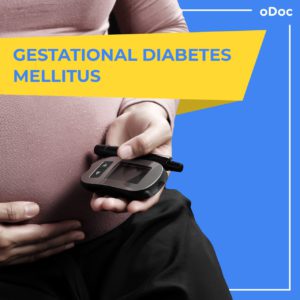
Menopause Brain Fog is real: A Simple Guide with Symptoms and Treatment
Menopause Brain Fog is real: A Simple Guide with Symptoms and Treatment Women in their 40s and 50s who are just entering the end of
Ladies, is it that time of the month? Are we feeling subtle cramps in our stomach, lower back pain, maybe some strange mood swings? Maybe we have to make a trip to the supermarket and buy our monthly stock of pads and tampons. We get it! Your period is here, which means those uncomfortable, painful cramps are here too. We’re here to help ease the burden by giving you some ways you can relieve the pain and discomfort.
What are menstrual cramps?
Period cramps, or dysmenorrhea, refers to the discomfort women feel in their abdomen, lower back and thighs during their menses. Cramping can vary in intensity from woman to woman. Some may feel a slight discomfort and others may feel more severe pains that can affect certain aspects of their life.

What are menstrual cramps?
Period cramps, or dysmenorrhea, refers to the discomfort women feel in their abdomen, lower back and thighs during their menses. Cramping can vary in intensity from woman to woman. Some may feel a slight discomfort and others may feel more severe pains that can affect certain aspects of their life.
Why do period cramps happen in the first place?
During your period, the uterus contracts to help shed its lining. Hormone-like substances (prostaglandins) trigger the contractions which causes pain and inflammation. Higher levels of prostaglandins can lead to more severe menstrual cramps.
Symptoms of menstrual cramps may include:
Symptoms of menstrual cramps may include:
What can you do to relieve the pain from cramps during your menses?
For mild and temporary cramps, some home remedies can provide comfort and relief.
Here are a few things for you to try:
Applying heat to your lower abdomen and lower back can relieve pain. If you don’t have a heating pad or hot water bottle, take a warm bath or use a hot towel.

Applying heat to your lower abdomen and lower back can relieve pain. If you don’t have a heating pad or hot water bottle, take a warm bath or use a hot towel.

Applying heat to your lower abdomen and lower back can relieve pain. If you don’t have a heating pad or hot water bottle, take a warm bath or use a hot towel.


Avoid foods that cause bloating such as fatty foods, alcohol, carbonated drinks, caffeine or salty foods. Instead have some tea with ginger or mint, hot water with lemon or strawberries
Avoid foods that cause bloating such as fatty foods, alcohol, carbonated drinks, caffeine or salty foods. Instead have some tea with ginger or mint, hot water with lemon or strawberries


Avoid foods that cause bloating such as fatty foods, alcohol, carbonated drinks, caffeine or salty foods. Instead have some tea with ginger or mint, hot water with lemon or strawberries
Maintain a consistent diet of minimally processed foods, fiber and plants. Try having more papaya, brown rice, walnuts, almonds, broccoli, fish, leafy green vegetables and flax seeds.

Maintain a consistent diet of minimally processed foods, fiber and plants. Try having more papaya, brown rice, walnuts, almonds, broccoli, fish, leafy green vegetables and flax seeds.

Maintain a consistent diet of minimally processed foods, fiber and plants. Try having more papaya, brown rice, walnuts, almonds, broccoli, fish, leafy green vegetables and flax seeds.


Drink more warm or hot water and eat water-based foods to increase your hydration such as cucumber, watermelon, lettuce and celery.
Drink more warm or hot water and eat water-based foods to increase your hydration such as cucumber, watermelon, lettuce and celery.


Drink more warm or hot water and eat water-based foods to increase your hydration such as cucumber, watermelon, lettuce and celery.
Exercise! Although the last thing we want to do during our menses is work out, exercise releases endorphins which relieves some menstrual cramp pain.

Exercise! Although the last thing we want to do during our menses is work out, exercise releases endorphins which relieves some menstrual cramp pain.

Exercise! Although the last thing we want to do during our menses is work out, exercise releases endorphins which relieves some menstrual cramp pain.

When to see a doctor:
You can speak to a VOG doctor by consulting an Obstetrician or Gynecologist on the oDoc app. GPs and Family Physicians are also available to consult.

Menopause Brain Fog is real: A Simple Guide with Symptoms and Treatment Women in their 40s and 50s who are just entering the end of

Did you know that gestational diabetes mellitus, also known as GMD, is one of the most common medical complications of pregnancy? What is GMD? Why

Endometriosis No woman looks forward to “that time of the month.” Dealing with nausea, stomach cramps, mood swings, back pains and fatigue, all whilst facing
Get the latest health tips delivered straight to your inbox!